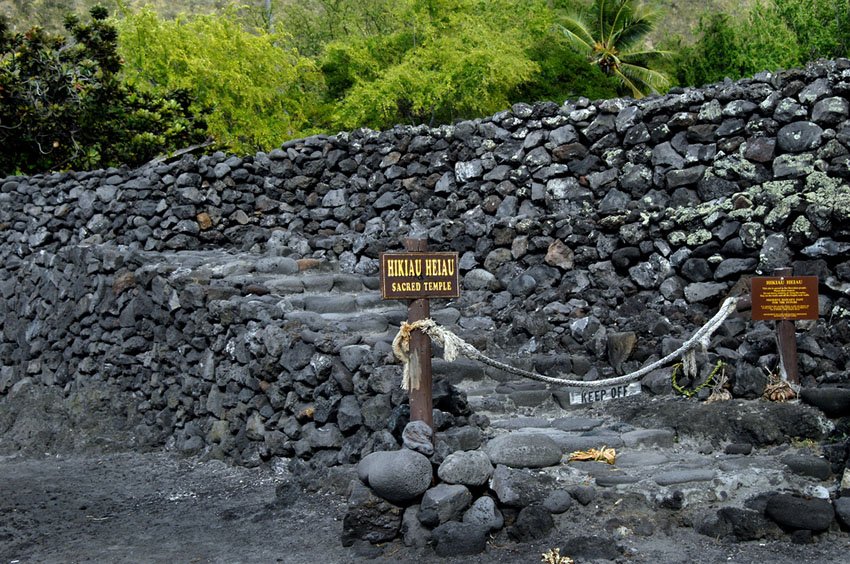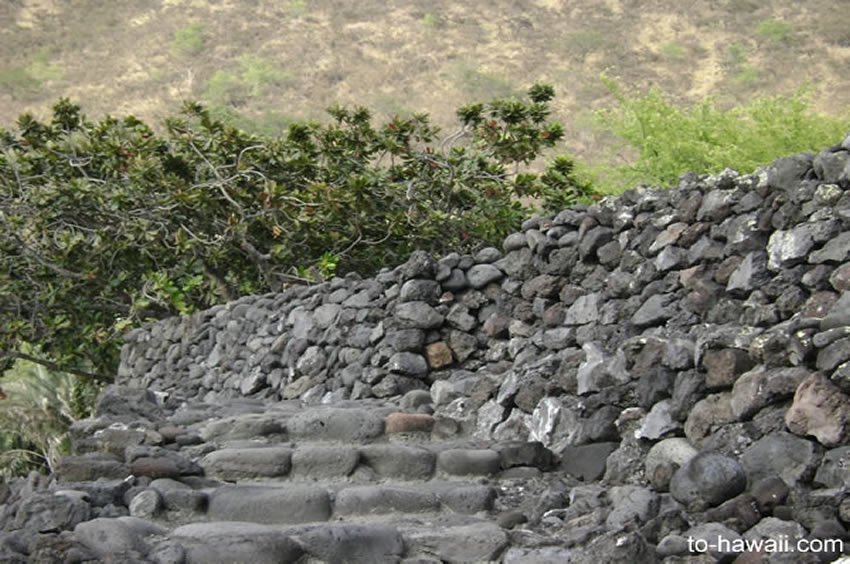Hikiau Heiau

Hikiau Heiau is a sacred luakini temple located at Napo'opo'o Beach on Kealakekua Bay, built by Chief Kalani'opu'u in the 18th century. Known for its ceremonial use including human sacrifice, the site gained historic significance during Captain James Cook's visit in 1779. Today, visitors can view the remnants of this important structure and reflect on its role in Hawaiian spiritual, political, and colonial history.
Hikiau Heiau, Big Island
Located at Napo'opo'o Beach (Kealakekua Bay), the Hikiau Heiau is an ancient Hawaiian temple site that was built by King Kalani'opu'u. It is a luakini (human sacrifice) heiau.
The original heiau used to be more than 250 feet (76 m) long and 100 feet (30 m) wide. A smaller stone platform is built on top of the main platform and is believed to have been the location of the lele (altar).
Hikiau Heiau was visited by Captain James Cook in 1778-1779. When the natives first saw his huge ship sail into Kealakekua Bay, they thought he was the returning god Lono, the god of agriculture and prosperity. The time when Cook arrived was during the months of the makahiki, which was a festival honoring the god Lono with hula performances, competitive games, feasting and special offerings.
Cook was treated as a divine guest by the Hawaiians. He attended a special ceremony at another nearby heiau that was held in his honor. And at Hikiau Heiau, he performed the first Christian ceremony in Hawaii, a funeral service for one of his crew members.
Shortly after Cook left Hawaii, he was forced to return due to a broken ship mast. By then the makahiki festivities had ended and the natives’ attitude toward Cook and his crew had changed. If they were truly divine, why would they have to return to land just because of a broken mast? This is what a mere mortal would do, not a god. Not to mention that one of the crew members had died a few days earlier.
Cook was killed in a conflict at Kealakekua Bay shortly after returning to land. Cook had tried to take the chief hostage in return for a small rowboat that a few natives had stolen from his ship.
Key Features of Hikiau Heiau
- Luakini heiau: A temple of state where human sacrifices were conducted in ancient Hawaiian religious rituals
- Royal connection: Built by Chief Kalani'opu'u and associated with major ceremonial and political events
- Captain Cook history: Visited by Captain James Cook in 1779; site of Hawaii's first Christian ceremony
- Large platform structure: Originally over 250 feet long and 100 feet wide with a smaller altar (lele) on top
- Scenic coastal setting: Situated at the edge of Kealakekua Bay, offering historical and oceanfront views
- Accessible trail: Reachable via a short path behind Napo'opo'o Beach


Frequently Asked Questions
What type of heiau is Hikiau?
Hikiau is a luakini heiau, used for religious ceremonies that included offerings and human sacrifice during the rule of ali'i (chiefs).
What is the connection to Captain Cook?
Captain Cook visited Hikiau Heiau in 1779 and held Hawaii's first Christian ceremony here. He was later killed nearby during a conflict.
How large was the original heiau?
The original platform measured over 250 feet long and 100 feet wide, with an upper altar area believed to be the site of ritual offerings.
Where is Hikiau Heiau located?
It's located at the southern end of Kealakekua Bay near Napo'opo'o Beach in the town of Captain Cook on the Big Island.
Is the site easy to visit?
Yes, it can be reached by foot via a trail behind Napo'opo'o Beach and is visible from the parking area.















